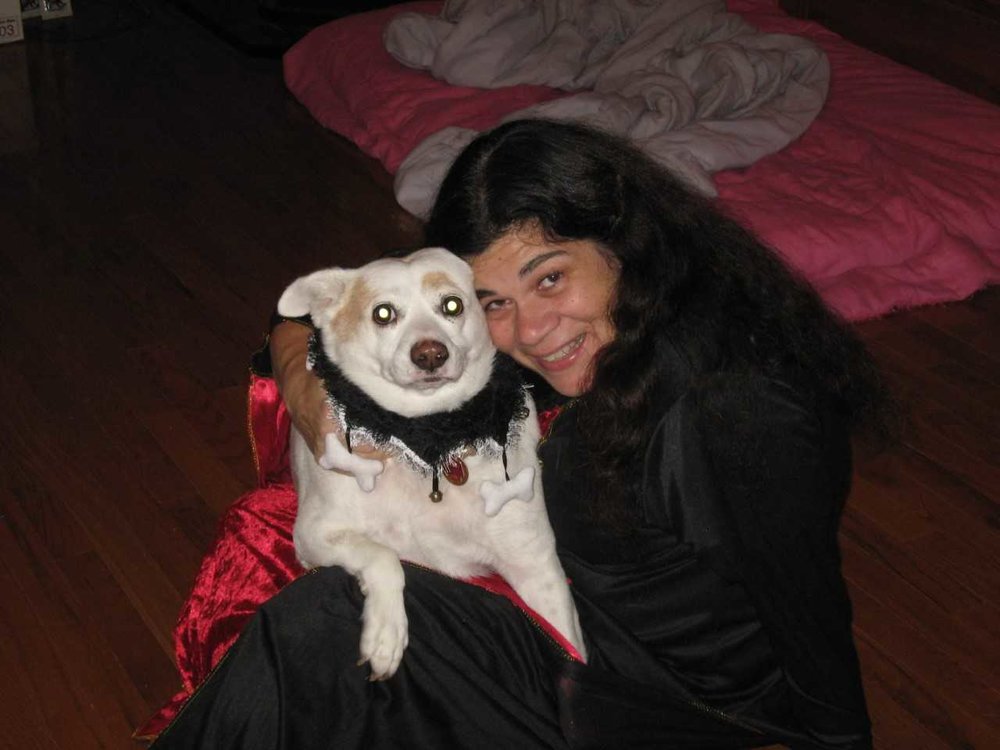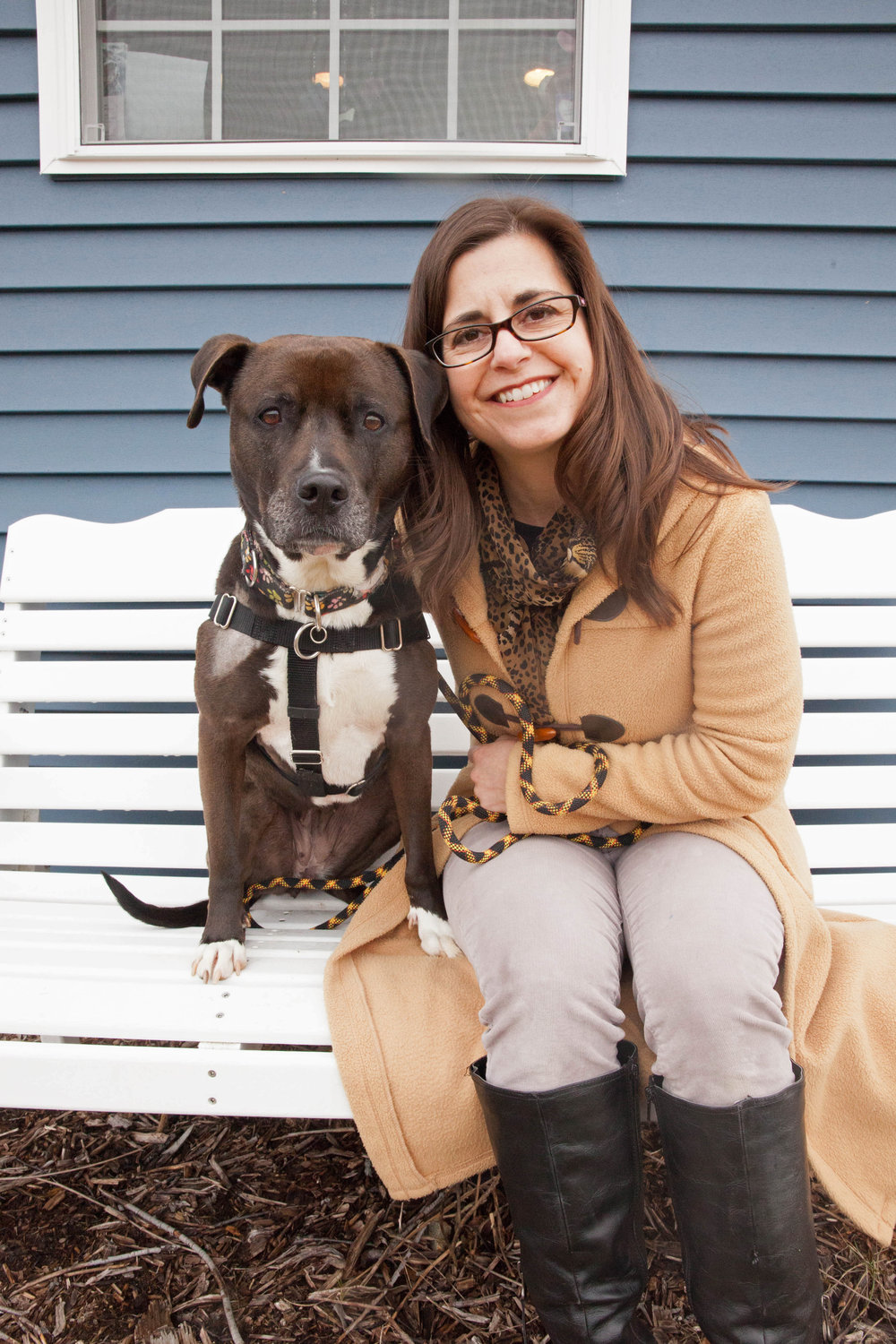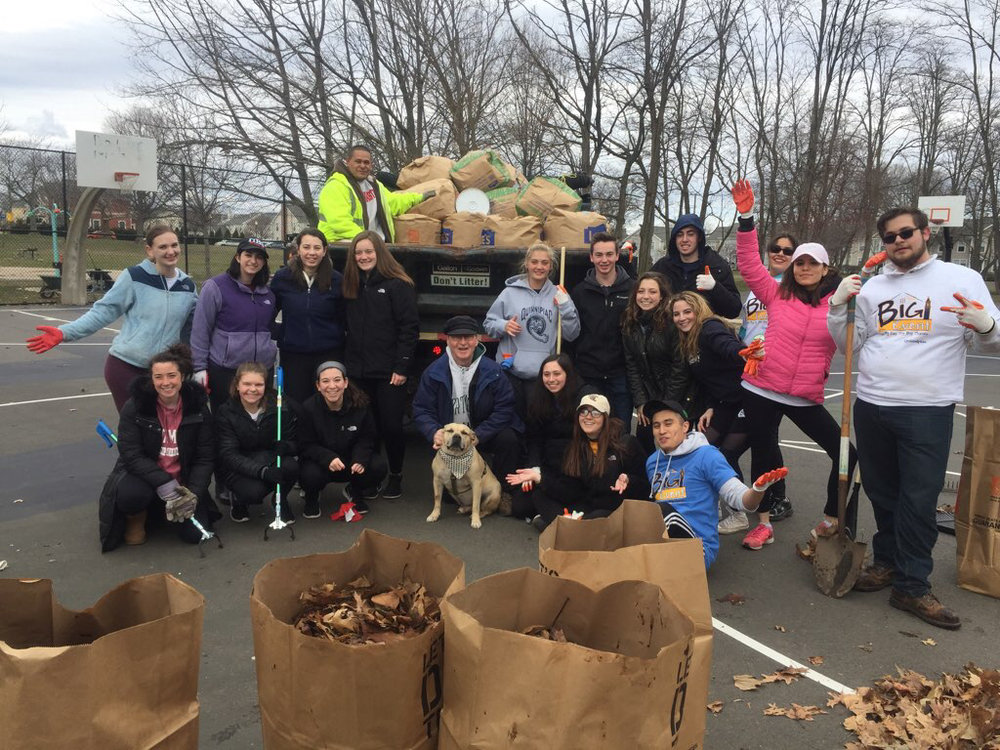
Lyn Johnson and one of her rescue dogs.
When Lyn Johnson first walked into the Almost Home Animal Rescue in Plainville, Connecticut, she saw that it wasn’t like other shelters where she had volunteered before. The smell was overwhelming and there were cages stacked on top of each other with minimal room for the animals to move.
Johnson left and didn’t want to come back.
But then she thought her previous experience could help make the place a little better. And so she went back.
“I volunteered twice a week and even after the first two or three times, I knew it was a bad place,” Johnson said. “But she [the owner] didn’t seem too concerned for the animals.”
Johnson gave Meda Talley, the shelter owner, ideas and even researched types of cages that would benefit the animals. Talley didn’t budge. But there were others trying to help, too.

An example of poor structure of animal cages in an animal shelter sent by Connecticut Humane Society.
Plainville animal control officers came in regularly and noted urine and feces in the cages, according to police documents. But because there are no state regulations on how to run a shelter properly, the officers were unable to take legal action to shut this one down. The officers first had to collect evidence proving the animals were in near-death conditions to arrest Talley under Connecticut’s animal cruelty statute.

Susan Linker and one of her dogs.
Johnson, the volunteer, also brought in a friend. Susan Linker, CEO of Our Companions Animal Rescue, told Johnson to get as much photo evidence she could.
“We started building this case and I went to the police,” Johnson said.
With the evidence Linker and Johnson provided, local police were granted a search and seizure warrant and rescued twenty dogs and twenty three cats. Talley, the owner, was arrested. See the full arrest warrant here.
“It was an extremely long process that took a year and a half before anything really happened,” Johnson said.
In the wake of these and other cases, Connecticut law makers are trying to make shelter regulations more strict.
There is no Connecticut statute that requires animal shelters to be licensed or inspected, which leaves room for them to run in unexceptional conditions –for example, with feces and urine in the cages – while giving law enforcement no recourse to take legal action.
Under a new law, officers will be able to take legal action sooner rather than later.
There are around 50 animals shelters in the Hamden and New Haven area. Shannon Rose, an animal control officer at the West Haven Animal Shelter, says the problem is that there are a lot of animal hoarders that are keeping the animals in terrible conditions and there are no rules on how people should run a shelter.
No one wants to see an animal suffer, so what is being done to help them?

Matt Spilka’s (North Haven, CT) three month old fostered German Shepard.
On July 7, 2017 Governor Dannel Malloy signed House Bill 6334, an act requiring the registration of animal shelters. The bill, which took effect October 1, requires all persons who wish to operate or maintain an animal shelter to pay a $50 fee to the commissioner for registration/license. The license can be renewed after two years.
An animal shelter can be defined as any private entity that operates a building or facility that is used solely to house homeless animals for the purpose of rescue or adoption and that is not operated within a private residence.
During this period of time, any law enforcer may inspect any shelter, kennel, pet shop or grooming and training facility and if in their judgement the place is not being maintained in a sanitary and humane manner, the officer may issue a fine of $500. If the owner of the facility fails to comply with the regulations or the orders of the officer, he or she may have the license suspended or be arrested.
“The goal is to avoid it escalating to an animal cruelty level,” Linker said. “If there’s a complaint, an officer can go in and enforce something or the owner(s) can lose their license or be arrested.”
The legislation stems from years of work by State Representatives Themis Klarides and Brenda Kupchick, who brought it forward after a number of animals died at a private animal facility that was run by a repeat animal abuser, Fred Acker. Klarides witnessed first-hand the need for the legislation after trying to adopt a cat at an animal shelter in Monroe that was run by Acker.
“We went to the shelter on a hot summer day and outside were a bunch of dogs in cages,” Klarides said. “When we got inside the owner wasn’t there but it was very dirty and disgusting, all of the conditions seemed very bad so we left.”

Connecticut State Representative Themis Klarides.
When Klarides and her sister left the shelter they decided to call the Department of Agriculture and the state representative of Monroe. They found out the owner wasn’t there because he was being sentenced on an animal cruelty charge in another town.
“Once he was sentenced we knew we needed to change the language of our statutes and make a Connecticut statute in regards to animal cruelty and who is allowed to actually maintain a commercial kennel or shelter,” Klarides added.
Klarides has been fighting to push a lot of legislation forward and, she says, sometimes you win and sometimes you lose, but she keeps fighting. After encountering the horrible conditions at the animal shelter, Klarides called up all of the animal advocates she knew to get this legislation pushed.
“I believe things happen for a reason and you keep fighting for them even if they don’t happen the first time,” Klarides said.
Klarides did just that and the bill was signed and put into effect on October 1, 2017.
Some are thrilled with this action and think it will help keep the animals safe. Susan Wollschanger of Connecticut Humane Society wasn’t aware of the bill until recently and thinks anything that’s going to prevent animal cruelty is a step in the right direction.
“As long as people are working together and collaborating, it’s great. It’s always great to have multiple voices,” Wollshchanger said.
Brenda Kupchick, CT State Representative, continues to be an advocate for animals. She is currently fighting for a new bill to be passed regarding the standards of shelters during weather conditions. If passed, it will establish certain requirements for what constitutes adequate shelter for a dog during different weather conditions.
In this clip you can listen to Kupchick’s opinion in favor of the animal shelter bill.

Nancy Bowman’s (Cheshire, CT) rescued three-year-old yellow labrador, Hadley.
With the bill being the new law, Plainville animal control officer Donna Weinhofer is hoping it will weed out all of the shelters run by those who don’t have good intentions. She also hopes it will professionalize those who mean well and may not know how to properly run a shelter.
“I think it can only help the animals in other people’s care. I think it’ll make it easier for me to make a bust that is necessary, but I also think these rescues are going to start hiding,” Weinhofer said.
To prevent rescues from hiding or closing down information is set up on CT Humane Society’s website so people can understand what the signs of neglect or abuse are. In addition, information on how to properly treat an animal and run a shelter is provided.
The Department of Agriculture can and will inspect any shelter at anytime to check up on the standards and conditions the shelters are in.
“We have something on our website telling you what the signs are and if you think something is going to happen we want it to be a reminder to people to report anything to the officers,” Wollschanger said.
Wollschanger and Linker think it’s important to educate those who want to run shelters so they know how to take care of the animals and keep up with veterinarian exams and medication.
“No person wants to see an animal suffer so we try to empower people to do something and make a difference,” Wollshchanger said.

Noelle Esposito’s (Northford, CT) rescue dog Riley.
According to Wollschanger, the CT Humane Society have training every day on how to handle, treat and care for the animals, because not every animal has the same needs. There are specific crews during different scenarios, such as for a winter weather event.
“We have a specific crew that is trained and ready to care for the animals during a snowstorm,” Wollschanger said.
The legislation is to not shut down the shelters but to professionalize them and help the people that run them learn how to properly care for the animals.
“They mean well, they just don’t know what they’re doing. It became clear that private organizations need a set of standards,” Linker said.
To learn more about what Connectciut is doing to prevent animal cruelty, go to CT Humane Society or Our Companions Animal Rescue website.

















